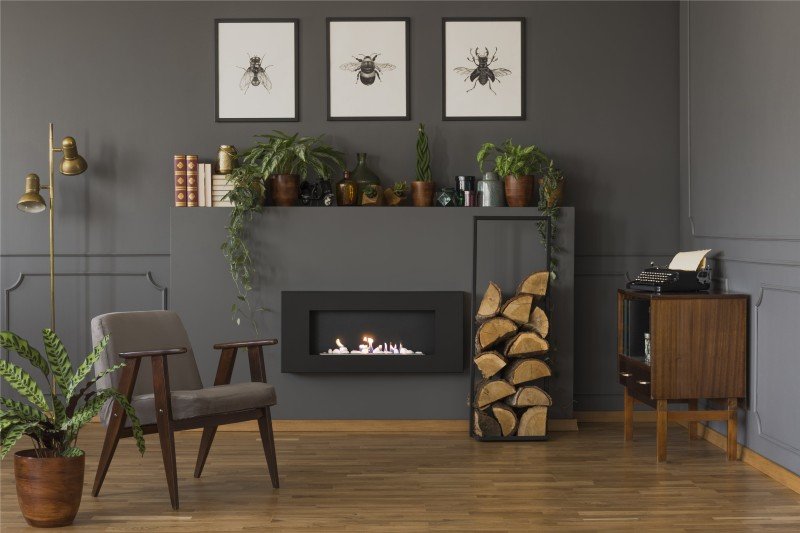How To Tell If You're At The Right Level For Fireplace

The Fireplace: A Warm Embrace of Tradition and Comfort
Fireplaces have actually been an essential part of human habitation for centuries, acting as a source of warmth, a meeting place, and a symbol of convenience. While the modern variations may differ incredibly from their ancient ancestors, the appeal of a fireplace endures. This short article checks out the different elements of fireplaces, including their history, function, types, and upkeep, while also attending to regularly asked questions.
The Evolution of Fireplaces
Fireplaces date back to prehistoric times when open flames were used for cooking, heating, and security from wildlife. Over click through the up coming document , fireplaces developed from easy fire pits to the sophisticated renditions we see today. Here is a short timeline of their evolution:
- Prehistoric Era: Cavemen utilized open flames for heat and cooking. Wind and smoke often blew into residences.
- Middle Ages: Stone and brick fireplaces became typical in homes and castles, including chimneys to carry smoke outside.
- Renaissance: Elaborately designed mantels emerged, and fireplaces ended up being centers of social interaction.
- Industrial Revolution: Innovations in heating materials caused a range of designs and performances.
- Modern Era: The development of gas, electric, and bioethanol fireplaces supplied cleaner options to traditional wood-burning systems.
Table 1: The Evolution of Fireplaces
| Period | Characteristics |
|---|---|
| Prehistoric Era | Open flames for heat and cooking |
| Middle Ages | Stone and brick structures with early chimneys |
| Renaissance | Elaborate mantels, social centers |
| Industrial Revolution | Varied styles, advent of brand-new materials |
| Modern Era | Gas, electric, and bioethanol options |
The Purpose of a Fireplace
Fireplaces serve double functions: they supply physical heat and produce a psychological environment. Property owners typically gather around the fireplace to bond, share stories, and delight in a cozy setting. The radiance of a fire can be soothing, contributing to a sense of relaxation and intimacy. Beyond personal satisfaction, fireplaces also use practical benefits, consisting of:
- Home Heating: Effective heat source, particularly in cooler environments.
- Increased Home Value: A properly designed fireplace can improve the visual value of a home.
- Emergency situation Heating: In case of power blackouts, wood-burning fireplaces can function as a crucial heat source.
- Aesthetic Appeal: A centerpiece that contributes to interior design.
Kinds of Fireplaces
Today, fireplaces can be found in numerous styles and fuel types, accommodating a diverse variety of choices and settings. Here are some common types:
Wood-Burning Fireplaces:
- Traditional fire pits
- Classic masonry fireplaces
- Need significant maintenance and chimney maintenance
Gas Fireplaces:
- Available in both direct vent and ventless ranges
- Much easier to use and maintain than wood-burning fireplaces
- Offer instantaneous heat with a flick of a switch
Electric Fireplaces:
- Offer associated heat sources without genuine flames
- Often created to imitate traditional fireplaces
- Suitable for smaller sized spaces and homes without a chimney
Bioethanol Fireplaces:
- Use bioethanol fuel, supplying a sustainable option
- Require no ventilation and can be placed anywhere
- Safe and easy to keep
Table 2: Types of Fireplaces
| Type | Fuel Source | Functions | Maintenance Requirements |
|---|---|---|---|
| Wood-Burning | Wood | High ambiance, heat source | Regular chimney cleaning |
| Gas | Natural gas or lp | Immediate heat | Very little, periodic maintenance |
| Electric | Electricity | Easy setup | Extremely low maintenance |
| Bioethanol | Bioethanol fuel | Ventless, portable | Low, mainly cleaning up |
Upkeep and Safety Considerations
Owning a fireplace includes certain duties, especially concerning its safe operation and long-term upkeep. Here are necessary upkeep ideas and safety standards:
Maintenance Tips:
- Annual Inspection: Always have your chimney and fireplace inspected at least once a year by a qualified service technician.
- Regular Cleaning: Clean out ashes and debris after each use, and ensure the flue is open before starting a fire.
- Look for Cracks: Inspect masonry for cracks or damage to avoid structural concerns.
- Use Proper Fuel: Only usage dry, seasoned wood for wood-burning fireplaces; do not burn treated wood.
Security Guidelines:
- Install Smoke Detectors: Ensure smoke detectors are practical, testing them month-to-month and replacing batteries as needed.
- Keep a Fire Extinguisher: Have one close-by, even if a fireplace is used occasionally.
- Supervise Flames: Never leave a fire unattended, and ensure children and animals are kept an eye on around the fireplace.
Regularly Asked Questions (FAQs)
1. How can I minimize smoke from a wood-burning fireplace?
To decrease smoke, use dry, seasoned wood, and guarantee that your chimney is clean and unblocked.
2. Is it safe to use gas fireplaces throughout a gas leak?
Never ever use a gas fireplace throughout a gas leak. Immediately leave the area and contact gas services for aid.
3. Can I install an electric fireplace myself?
Electric fireplaces are generally easy to set up, however it is suggested to seek advice from professionals to make sure security and compliance with regional structure codes.
4. What is the very best kind of fireplace for small spaces?
Electric fireplaces or bioethanol models are often best for small spaces, as they do not need extensive ventilation or structural adjustments.
Fireplaces have actually transcended their initial function of offering heat to end up being valued elements of home style and domesticity. They stimulate memories of warmth, celebrations, and togetherness while providing functional advantages that enhance modern living. By comprehending the different types of fireplaces, their upkeep, and security practices, house owners can delight in the timeless appeal of this cherished feature for generations to come.

